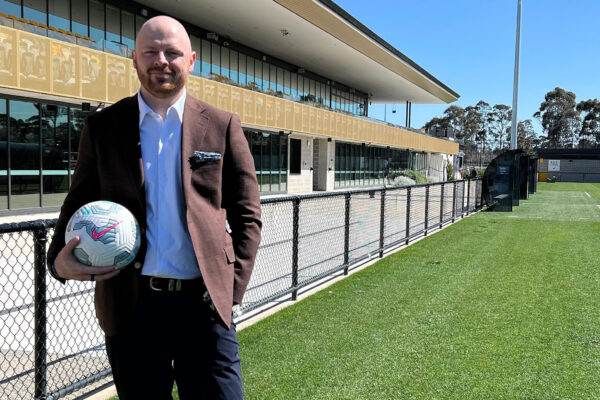
In the digital age, with clubs and athletes alike looking for any which way they can improve their performance on and off the pitch, one platform is looking to target the teenage development, allowing clubs to track their players progression and better help find areas of improvement within their squad.
PlayerStat Data are a development data platform, aimed at football teams and academies aged 13-19, targeting key development areas. They offer a flexible range of physical, on-field data performance, with the ability for coaches to add in their own assessment notes, allowing for a wholistic approach to player assessment and analysis. Their secure platform ensures that clients only have access to their own club’s individual data, as many Irish and American clubs are keen to investigate the possibilities of PlayerStat Data for their club.
However, PlayerStat Data does give the opportunity to compare metrics for players and teams, against the 100s of players stats already in their system, allowing coaches to gauge at how similar their players are performing to other players of that age and position. PlayerStat Data also takes clients match footage, and provides individual and player performance data insights, allowing for an objective analysis of a player’s performance over a match, month, or even the whole season.
PlayerStat Data has set its sights on teams aged 13-19, as they feel that is where the data can be extrapolated and utilised to its fullest potential. The ability for players and coaching staff to rectify player weaknesses earlier thanks to identifying the objective shortcomings of players, can allow coaches to focus more on a certain skill or technique, which can bring the player up to speed.
PlayerStat Data offers 5 key figures for measuring the success of a youth team or academy.
- Player performance data output: collected from recorded match video footage.
- Physical data output: (ie. GPS-driven data outputs, maturation tests etc).
- Sports psychological insights: giving greater context around Youth Player Dev.
- Socio-economic data collection: specific to the client’s own operations.
- Coach Assessment: output of players’ ability at varying stages across the season.
There is also the ability to create highlight reels of game day and training, which is invaluable to a coach, who can show players what they are doing right, or where they are going wrong in specific passages. PlayerStat Data can also offer both team and individual player match reports, allowing coaches to find their shining lights during poor team performances, or areas that are struggling more than others.
PlayerStat Data looks to give coaches objective data, which can also benefit them come end of season, when retaining, re-trialling, and release procedures are under way, allowing clubs to explain their reasons why a player has been chosen for a certain category, and gives a player an understanding of where they need to improve. It also speeds up the process of analysing for coaches, who no longer need to watch through and edit match footage, as this is taken care of by PlayerStat Data.
PlayerStat Data, whilst popular in the US, Canada, and the UK, has not broken into the Australian market considerably. Much of Australia’s NPL youth teams have very limited statistical analysis, and more so the judgement of coaching staff. This can leave the clubs victim to potential coaching bias, which has seen the pathways of many youth players disrupted or halted due to coach favouritism, over objective measures of talent and ability. And whilst coaches can still utilise their own ideas and notes within PlayerStat Data, the more wholistic approach of having both objective and subjective information can allow for the most accurate decisions, and better coaching outcomes for both clubs and players.
For more information on PlayerStat Data, click here.














